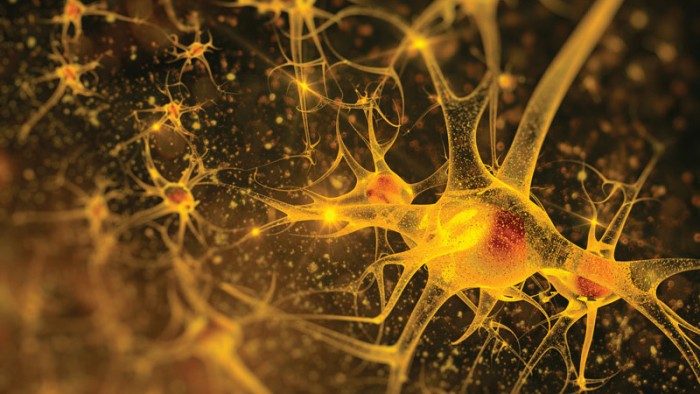 Natural Sciences
Natural Sciences
Life, By the Numbers

Historically, biology was all about classification—sorting creatures, great and small. But it is increasingly about how life works, and that involves tremendous amounts of data that need to be managed, analyzed and understood.
This is the burgeoning field of mathematical and theoretical biology—the use of mathematics to understand biological processes. It’s an “explosive” growth area in science, says Hal Sadofsky, associate dean for natural sciences at the University of Oregon, and it’s one in which the university is expanding its faculty.
The recent hiring of Yashar Ahmadian is a step in that direction.
Ahmadian, an assistant professor in biology and mathematics, blends the disciplines to explore how the brain works. He builds mathematical equations to test theories about biological functions. He also uses math to make massive amounts of complex data understandable.
His focus is neurons, the specialized nerve cells in the brain that transmit impulses. “We cannot understand the whole brain at once and we are quite far from that,” Ahmadian said, “so we focus on local networks of neurons.”
When a person looks at an object, such as a tree, there are all sorts of signals sent from neuron to neuron in the brain so it’s understood that what is being seen is a tree.
Scientists have created mathematical models to simulate this on computers, with one critical shortcoming: While the simulated neurons pass information in one direction, real neurons pass information back and forth.
It is these connections that Ahmadian studies, and he uses mathematical models to help him. He’s published papers on models that functioned like actual neurons in the primary visual cortex of the brain.
At the UO, Ahmadian is helping other researchers crunch the data that they have collected from mice, worms and other animals.
Animal data is often complex, making it a good candidate for an assist from mathematics. For example, Ahmadian helped psychology professor Mike Wehr and his colleagues understand a paradoxical aspect of the data they had acquired on a class of neurons that play an important role in processing auditory information in the brain.
“One of my goals,” Ahmadian said, “is coming up with new methods that get around the complexity of the data.”
Ahmadian is also creating a graduate-level course on theoretical neuroscience that is expected to start fall term 2016.
The field provides a better understanding of the relationship between the biological circuitry of nervous systems and their higher-level functions, including sensory perception, learning and memory, motor control and decision-making.
Ahmadian’s students will be introduced to the latest theories that successfully describe these functions. The theories and models will be valuable even for those who don’t plan to focus on mathematical biology or theoretical neuroscience.
“Students of biology and neurobiology in particular would certainly benefit from the course,” Ahmadian said.
—Dylan Darling


 Twitter
Twitter Facebook
Facebook Forward
Forward